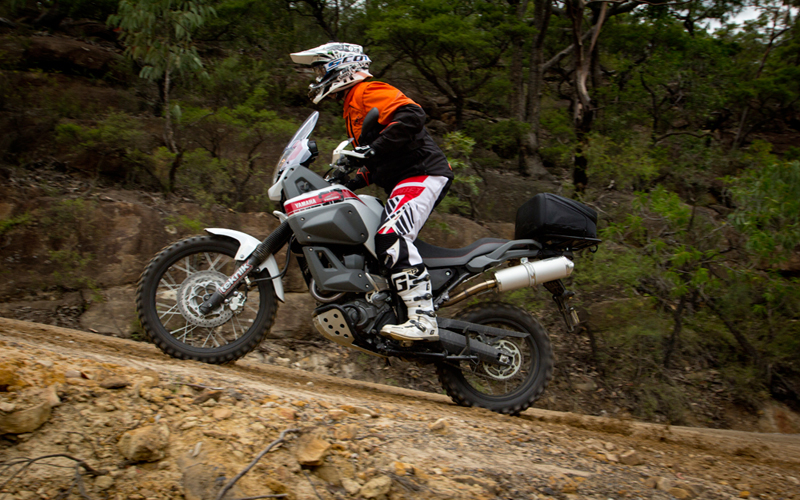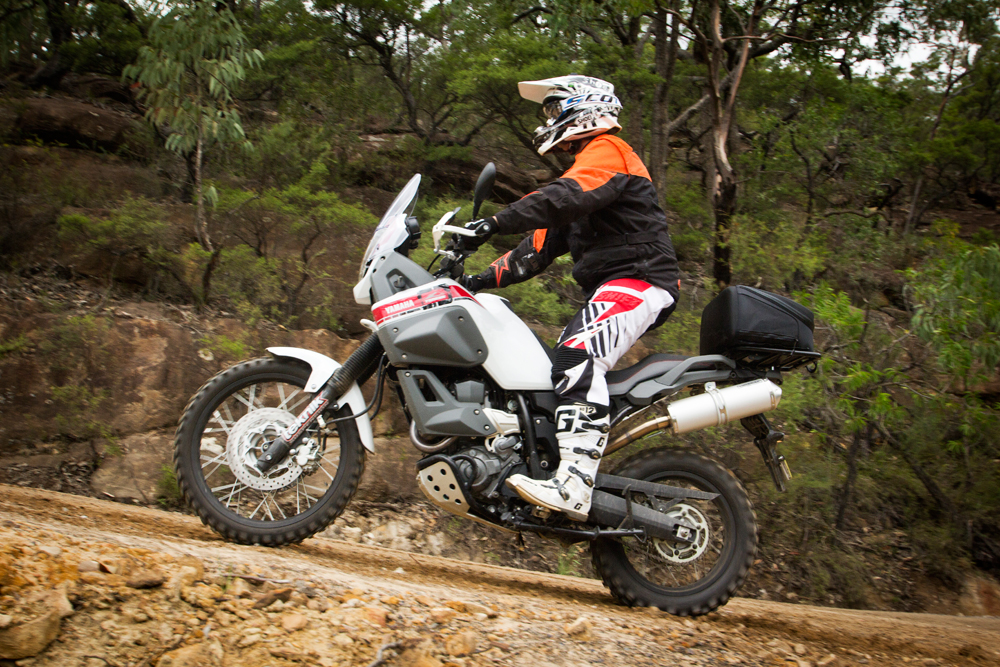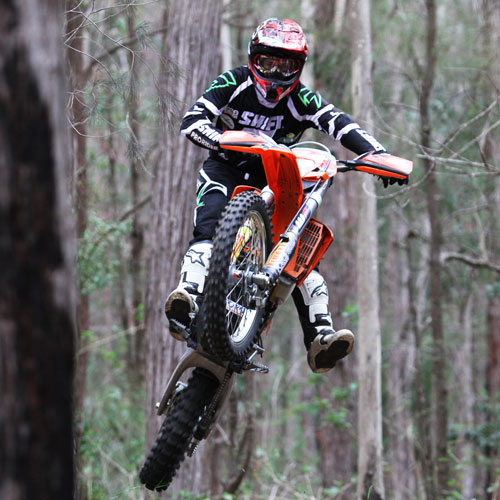
CLIMBING
Get in the correct position and riding up hills on your adventure bike will be much easier.
STORY SHANE BOOTH | PHOTOGRAPHY SHANE BOOTH
When the trail heads upwards at any decent angle, many riders begin to leave their comfort zone, especially when they’re on an adventure bike. Rider and bike combined usually weigh in at several hundred kilograms and when that starts getting away from you it will get the heart racing; it’s a large mass to keep moving up a hill. The key here is staying under total control at all times by using the correct body position and control use to maintain forward momentum.
MOMENTUM
This is what going uphill is all about, especially on a bigger bike. To have forward momentum you need to maintain a decent level of traction; the correct body position and control use will help you make that happen. Always try to carry good momentum into climbs, but at the same time remember you’re on a bigger bike that you need to be a little bit kind to. So don’t go in with excessive speed that will cause hard impacts. Remember, momentum is not speed. When I say carry momentum, that doesn’t mean go as fast as you can; it’s more about carrying a speed you can maintain up the climb and will get you over the peak. You want to avoid having to build more momentum on the way up the climb — that’s difficult to do and usually results in breaking traction.
BODY POSITION
As the bike changes angle and heads up the climb, let it pivot at your feet and let your elbows bend. This allows the bike to change angle underneath you; at the same time you’re keeping your body weight central and pushing down through the footpegs. This position will also make it physically much easier to remain standing for the duration of the climb. You can see in this photo that Matt’s head is up over the screen as he climbs — that gives you an idea of how far you can let the bike pivot.
CONTROL USE
This is critical and will most likely decide whether or not your bike maintains traction and drive. The first thing to do is select a gear that is appropriate for the climb: you want the bike to be in a nice part of the power delivery, not revving too much and not on the brink of a stall. For slow-speed climbs, first you’ll require some help from the clutch to keep the bike from stalling. Your throttle control needs to be accurate and smooth. You have plenty of power on tap on an adventure bike and being heavy handed on the throttle will get you stuck. Pair the throttle up with some clutch use to fine-tune the power delivery, slipping the clutch slightly if you feel some wheel spin coming on to take a slight amount of drive away from the rear wheel. This technique allows you to maintain as much forward momentum as possible. If you didn’t use the clutch once the rear wheel breaks traction you’d have to roll out of the throttle, which would bring you to a stop. Smooth throttle and clutch control will ensure traction is maintained, which in turn keeps you moving up the hill.
——————–
THE WRONG POSITION
Here is a look at what happens to your body position if you remain stiff on the bike and don’t allow the bike to pivot underneath you as it begins the climb. You can see Matt’s head is much further back than when he’s in the correct position. This shifts your weight back and the result is you’ll require a large amount of strength in your hands and arms to hang on; in this position, you are literally hanging off the handlebars and will fatigue very quickly.





